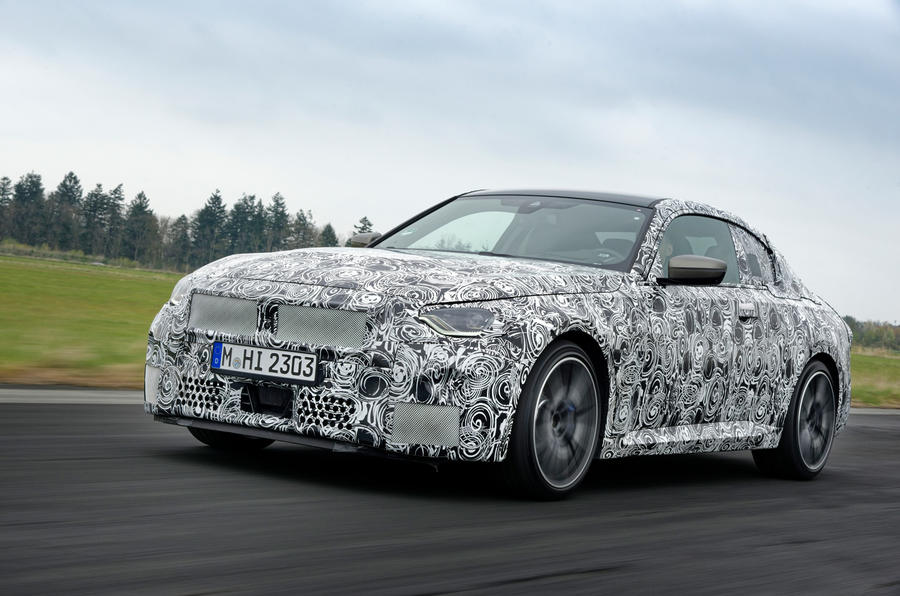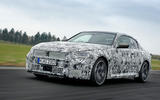Having produced one of the best driver’s cars in recent years with the first-generation 2 Series Coupe, BMW was unlikely to stray too far away from its original engineering formula when it came to its successor. The front-wheel drive platform and transverse engine layout of the four-door 2 Series Gran Coupe were never a serious consideration for the smaller two-door model, said Jos van As, BMW’s head of driving dynamics.
The enthusiastic Dutch engineer is speaking before we head out of BMW’s driver training facility on the outskirts of Munich in a pair of pre-production prototypes to discover if the new 2 Series Coupe can live up to the performance expectations and overall dynamic talents of the model it replaces.
Interestingly, he reveals that development of the new car was partly carried out in combination with the latest BMW Z4; the two cars share powertrains, integral parts of their CLAR (Cluster Architecture) platform and their Macpherson strut front suspension and multi-link rear set-up.
“There is a lot that is shared between the two,” he says. “With the 2 Series Coupe, we’ve managed to increase the stiffness of the body by up to 40% over the old model. It makes a big difference, especially to steering precision because you’ve got a more rigid basis for the rack. Changes to the front suspension also allow us to run greater negative camber. You can really feel it.”
The disguised prototypes we’re here to drive don’t provide many clues to the appearance of the new BMW beyond the fact that you can make out a three-box silhouette with traditional cab-backwards proportions. However, they confirm the 2 Series has grown in size, if only moderately. It also gets a larger footprint - the wheelbase extends by 51mm over the first-generation model and the tracks are up by 52mm and 31mm respectively. Keep looking and you also notice greater volume to the wheelhouses, which van As says now accommodate wheels ranging to 19-in in diametre on standard models.
So far, BMW has confirmed four 2 Series models with either rear- or four-wheel drive depending on the engine. Included in the UK launch line-up is the 220i and 220d as well as the 230i and the M240i xDrive driven here. A mid-range 225i is also planned for selected markets, but it remains unclear whether it will be sold here.
The rear-wheel-drive 230i receives a 245bhp version of BMW’s B48 turbocharged 2.0-litre four-cylinder petrol engine. However, it is the four-wheel drive M240i xDrive with the German car maker’s B58 turbocharged 3.0-litre six-cylinder that is set to take the performance honours when sales of the new BMW begin later this year (until the full-fat M2 arrives). With 374bhp, it offers 19bhp more than its predecessor and 31bhp less than BMW the outgoing M2 Competition.





































Join the debate
Add your comment
We await with baited breath to find out just how hideous it will be. Sadly, given recent form, the answer is likely to be: very.
Just wanted to say that I really enjoy reading piece by Greg Kable.
Cannot help but sense from this article that the M240i is pretty much todays M2, much like today's M2 is pretty much the last gen M3/M4 in terms of performance and dynamics. And given that almost all buyers of all three will spend most if not all of their time driving on public highways, this will likely be a more rationale purchase than say the new M3/M4 or the next M2?